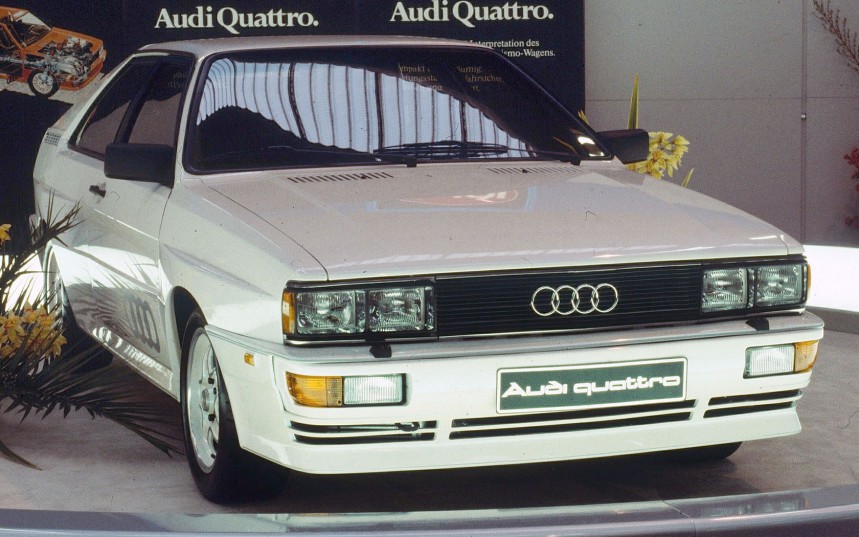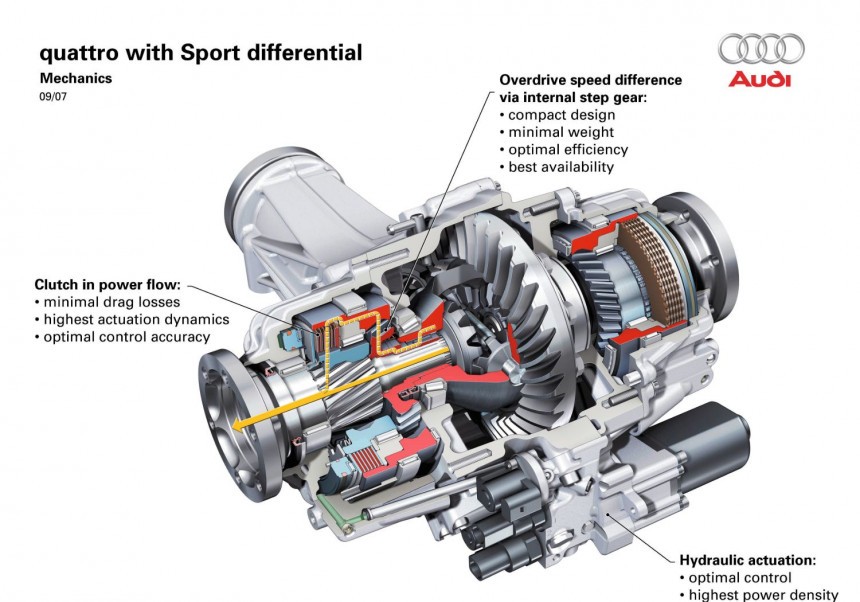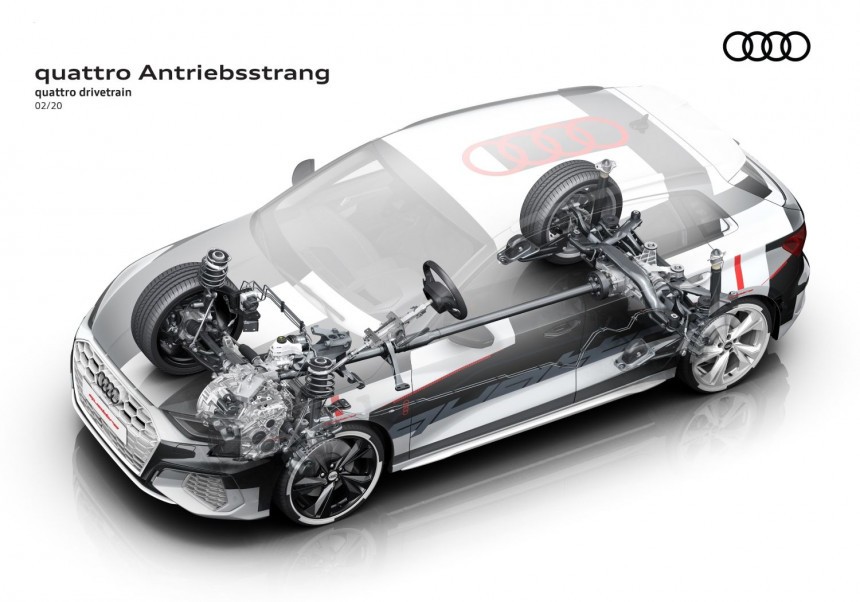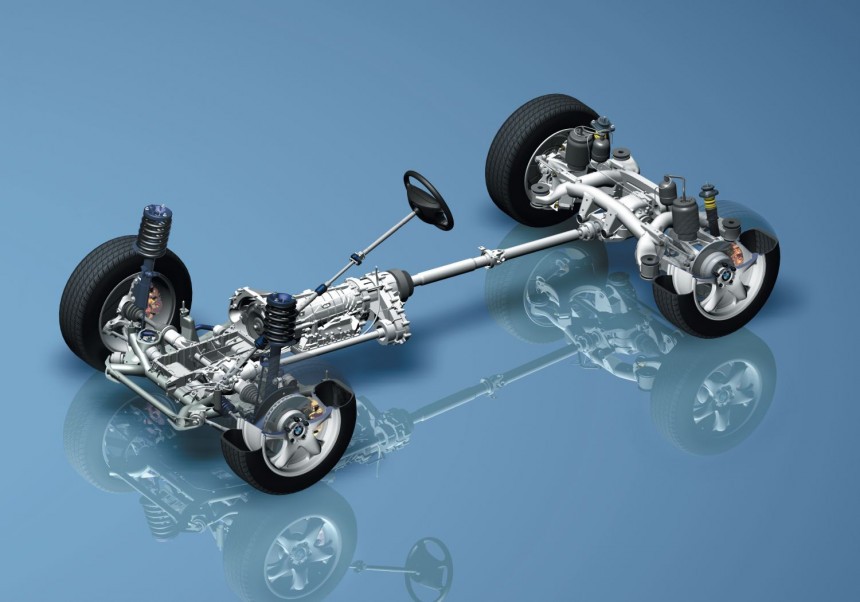The rivalry between the two German automakers has given birth to many arguments among fans of each brand, and one of the most heated debates is centered around their all-wheel-drive systems. But as we’re about to see, comparing quattro to xDrive isn’t as simple and straightforward as one might think.
To understand why this comparison isn’t easy to make, we must keep in mind that both quattro and xDrive are monikers used to market various all-wheel-drive technologies, so we aren’t talking about one distinct system for each brand.
In the late 1970s, inspired by the off-road capabilities of one such vehicle (the Volkswagen Type 183 ‘Iltis’) during winter testing in the snowy parts of Sweden, Audi engineers led by Jörg Bensinger started developing a 4WD system for their road and rally cars.
In the first quattro system, the engine and transmission were mounted in a longitudinal position while torque was sent through the gearbox to a central mechanical differential which equally delivered it to each axle, each fitted with another open differential. The central and rear diffs were manually lockable through a switch on the center console.
The quattro system revolutionized rallying and kickstarted the trend of 4WD and AWD systems on passenger cars.
Then, in the late 1980s, Audi ditched the conventional central differential for a more advanced torque-sensing (Torsen) variant, which automatically directed power to individual axles. By default, it had a 50:50 split but could divert up to 75% of torque to either axle, depending on driving conditions.
The system continued to evolve and maintained a default 50:50 split until the fifth generation introduced in 2006 with the B7 Audi RS4 and the manual transmission version of the 2006 B7 Audi S4.
It used a permanent asymmetric system with a Torsen type 3 (Type C) center diff with a 40:60 front/rear split. With the aid of the ESP system, 100% of the torque could be transferred to either axle.
Since 2008, a new sport rear differential developed by Magna Powertrain is available on a select range of models, especially S and RS variants. While the Torsen Type C central diff is still used to distribute torque between the two axles, the rear sport diff further distributes it selectively to the rear wheels, bringing torque vectoring to the quattro system.
Two years later, Audi debuted the sixth-generation quattro on the RS5. The main change is the replacement of the Torsen Type C central differential with an Audi-developed "Crown Gear" version that can divert up to 70% of the torque to the front axle and up to 85% to the rear.
Apart from the so-called "true quattro" used on models with longitudinally mounted engines, Audi also uses the name “quattro” for the Haldex-based AWD systems used for transverse applications. Throughout multiple generations, this system is used to engage the rear wheels on FWD-based platforms through an electro-hydraulic limited-slip differential operated by an electronic control module (ECM).
This system has little in common with its “true quattro” counterparts and has been invented by Swedish-based company Haldex Traction, now a subsidiary of BorgWarner. With slight modifications, it has been used by many manufacturers, including Volvo, Saab, Ford, VW, Seat, Skoda, or Land Rover.
To summarize, Audi currently offers multiple systems under the quattro moniker, which use different technologies tailored to specific models, including the multi-motor layouts on their EVs.
The system used a center differential with a default front/rear torque split of 37:63. Up to 80% of the torque could be transferred to each axle depending on driving conditions. The same principle applied to the rear diff, which was used to vary torque between each wheel.
xDrive debuted in 2001 on the company’s first SUV, the X5, and the facelifted E46 3 series 325xi, 330xi, and 330xd models. Unlike the system from the mid-eighties, it uses an electronically actuated clutch-pack central diff that sends torque to the front axle.
Under normal conditions, it has a 40:60 split, but theoretically, 100% of the torque can be distributed to each axle. However, this can only happen if the rear wheels have absolutely no traction, as the rear driveshaft is hard coupled to the gearbox output.
The system is electronically controlled and uses the electronic stability control (DSC) module to detect wheel slip.
In 2008, BMW introduced an upgraded torque-vectoring feature to xDrive models, called Dynamic Performance Control (DPC). It uses a clutch pack and planetary gearset within the differentials to distribute torque between the front and rear axles and between the two wheels on the rear.
BMW uses a different xDrive system on models with transverse engine layouts and FWD-based platforms like the 1 Series, 2 Series, second-gen X1, or X2. Here, a Haldex-based system is also used. It functions in the same manner as Audi’s system, transferring power to the rear wheels only when wheel slippage occurs.
To make such a comparison, we would have to take every current model from each manufacturer and compare it to its segment rival in the same conditions, with the same driver, and identical tires.
What we can all agree on is that Audi’s “true quattro” systems are more technologically complex, and their influence on the automotive industry is undeniable.
I would even venture to say that they are more effective than any xDrive but since the overall performance of a vehicle is influenced by many other factors apart from these technologies, trying to argue which system is better is fairly naïve, fundamentally subjective, and ultimately pointless.
So, let’s appreciate that both quattro and xDrive exist, applaud the engineers responsible for their development, and debate about which vehicle, as a whole, is better than the other.
Audi quattro systems
First up is Audi’s legendary system, which was first introduced in 1980 as a permanent four-wheel-drive system on the Audi Quattro road and rally cars. It evolved from a rudimentary system developed by VW for military vehicles.In the late 1970s, inspired by the off-road capabilities of one such vehicle (the Volkswagen Type 183 ‘Iltis’) during winter testing in the snowy parts of Sweden, Audi engineers led by Jörg Bensinger started developing a 4WD system for their road and rally cars.
The quattro system revolutionized rallying and kickstarted the trend of 4WD and AWD systems on passenger cars.
Then, in the late 1980s, Audi ditched the conventional central differential for a more advanced torque-sensing (Torsen) variant, which automatically directed power to individual axles. By default, it had a 50:50 split but could divert up to 75% of torque to either axle, depending on driving conditions.
The system continued to evolve and maintained a default 50:50 split until the fifth generation introduced in 2006 with the B7 Audi RS4 and the manual transmission version of the 2006 B7 Audi S4.
It used a permanent asymmetric system with a Torsen type 3 (Type C) center diff with a 40:60 front/rear split. With the aid of the ESP system, 100% of the torque could be transferred to either axle.
Two years later, Audi debuted the sixth-generation quattro on the RS5. The main change is the replacement of the Torsen Type C central differential with an Audi-developed "Crown Gear" version that can divert up to 70% of the torque to the front axle and up to 85% to the rear.
Apart from the so-called "true quattro" used on models with longitudinally mounted engines, Audi also uses the name “quattro” for the Haldex-based AWD systems used for transverse applications. Throughout multiple generations, this system is used to engage the rear wheels on FWD-based platforms through an electro-hydraulic limited-slip differential operated by an electronic control module (ECM).
To summarize, Audi currently offers multiple systems under the quattro moniker, which use different technologies tailored to specific models, including the multi-motor layouts on their EVs.
BMW xDrive systems
The Bavarian automaker’s first all-wheel-drive car was the E30 3 Series 325iX introduced in 1985 but discontinued in 1990 when the E36 generation was launched.The system used a center differential with a default front/rear torque split of 37:63. Up to 80% of the torque could be transferred to each axle depending on driving conditions. The same principle applied to the rear diff, which was used to vary torque between each wheel.
Under normal conditions, it has a 40:60 split, but theoretically, 100% of the torque can be distributed to each axle. However, this can only happen if the rear wheels have absolutely no traction, as the rear driveshaft is hard coupled to the gearbox output.
The system is electronically controlled and uses the electronic stability control (DSC) module to detect wheel slip.
BMW uses a different xDrive system on models with transverse engine layouts and FWD-based platforms like the 1 Series, 2 Series, second-gen X1, or X2. Here, a Haldex-based system is also used. It functions in the same manner as Audi’s system, transferring power to the rear wheels only when wheel slippage occurs.
The conclusion
Regardless of the technologies involved, all quattro and xDrive systems do a great job providing better traction. To say that one is better than the other is nearly impossible since there are multiple systems and factors involved.To make such a comparison, we would have to take every current model from each manufacturer and compare it to its segment rival in the same conditions, with the same driver, and identical tires.
I would even venture to say that they are more effective than any xDrive but since the overall performance of a vehicle is influenced by many other factors apart from these technologies, trying to argue which system is better is fairly naïve, fundamentally subjective, and ultimately pointless.
So, let’s appreciate that both quattro and xDrive exist, applaud the engineers responsible for their development, and debate about which vehicle, as a whole, is better than the other.






















